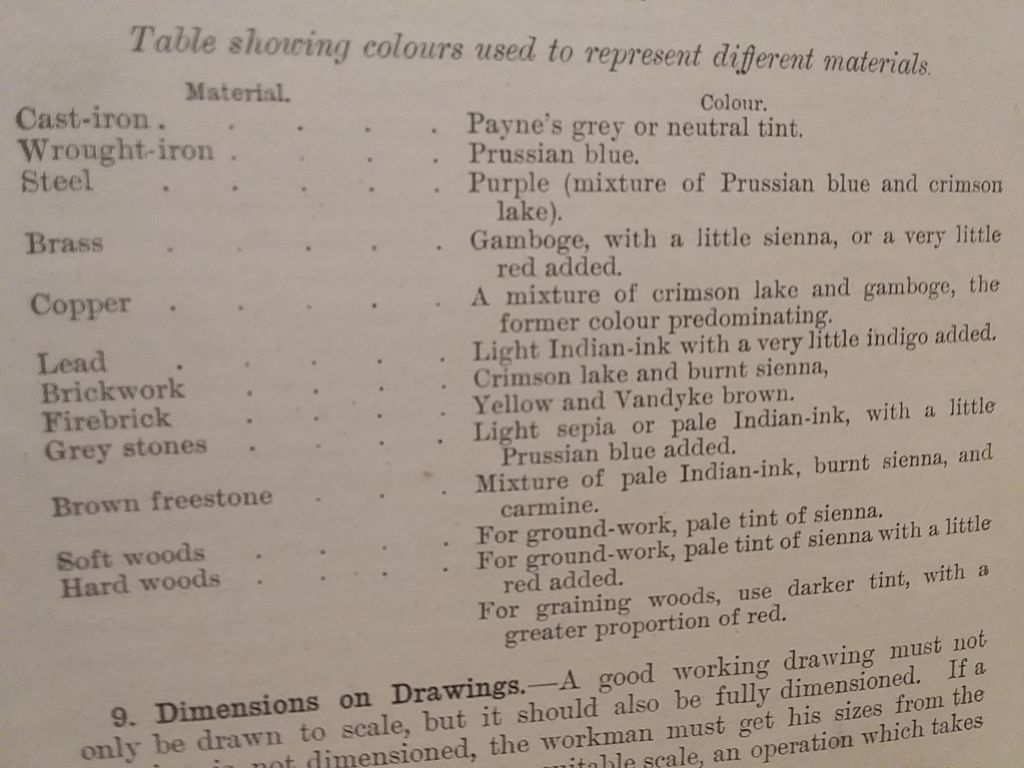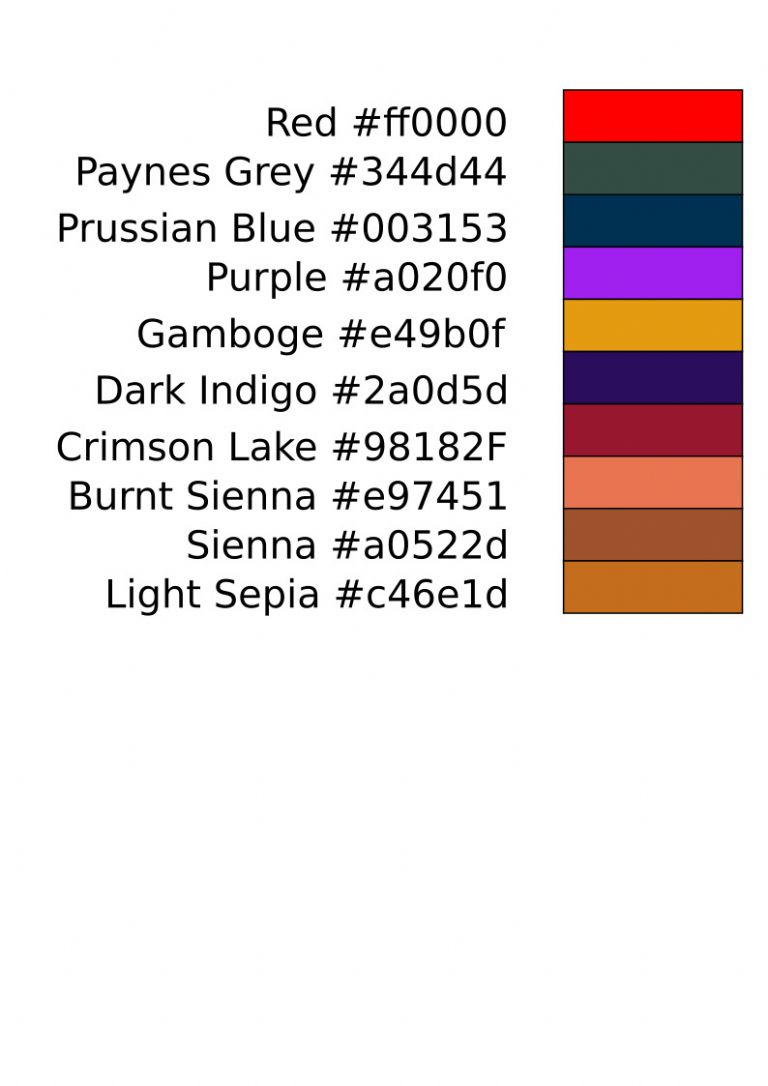There were standards, or at least conventions, for colouring representing different materials and the drawing's annotations.
It must have been fairly expensive so probably limited to the drawings used to impress potential customers in winning and negotiating contracts.
A bit like the "Artists' Impressions" issued by property-speculators today… but to a far higher standard not only of accuracy, but also of detail, context and honesty!
They are:
Wrought-iron and dimension-lines —– Prussian Blue
Cast iron —— Payne's Grey
Centre & Datum Lines —— Crimson Lake
Brass & Gunmetal —— Gamboge or Indian Yellow [no mention of Copper]
Stone Yellow —— Ochre
Wood Burnt —— Sienna
Leather —— Sepia
Brickwork ——- Light Red
Lead —— Indigo Lead*
Packing —– Burnt Umber [I think as in piston-rod and valve seals, not spacers or shims.]
Water —— French Ultramarine
Steel —— Prussian Blue and Crimson Lake.
'
*[sic – I wonder if that's a typesetting error. The original list is the other way round, colours first.]
For obliterating an ink line or giving a light edge to a drawing, we are recommended to use Permanent Chinese White; while Prepared Ox Gall added to the coloured inks will help their application to slightly greasy tracing-paper or linen.
So sayeth:
Henry J. Spooner, C.E., Machine Design, Construction and Drawing, Longmans' Green & Co., London, 1913. pp80-81.
So now you've no excuse not to get it right, but these preparations are not cheap at one shilling for the cheapest in whole cakes or pans. Still, it's for the Counting-house to spread the cost in overheads around the invoices to the customer!
I am pretty sure these colours are still readily available under those names, from artists' requisites stockists. They do not include modern materials like aluminium and of course plastics, but I suppose you could devise your own, with a key at the foot of the drawing. I'd suggest Battleship Grey for al. alloys, for example.
But I will growl if you represent Granite by Black or Very Dark Grey; or call stone of those colours, "Granite"!
Edited By Nigel Graham 2 on 30/10/2022 21:17:30
bernard towers.



 with hexadecimal
with hexadecimal 




